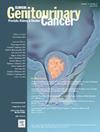Histotripsy in the Management of RCC: A New Frontier in Focused Therapies
IF 2.7
3区 医学
Q3 ONCOLOGY
引用次数: 0
Abstract
Histotripsy is a noninvasive, ultrasound-based tissue focused technique that uses focused high-intensity sound waves to mechanically fractionate tissue without causing thermal damage. Initially explored in preclinical studies, histotripsy has shown promising results in various solid tumor models, demonstrating its potential as an effective treatment option for oncological conditions. The technique works by creating microbubbles within the targeted tissue, leading to mechanical disruption and cell death while minimizing harm to surrounding healthy structures. This makes histotripsy particularly advantageous for tumors located near critical anatomical structures or in patients for whom traditional surgical methods are not viable.
Early in vitro and in vivo studies have reported promising outcomes, including successful tumor reduction and improved survival in animal models. However, the translation of these findings into clinical practice is still in progress. Ongoing clinical trials aim to determine the safety, efficacy, and long-term outcomes of histotripsy in the treatment of primary solid renal tumors. These trials will help define optimal treatment protocols, identify ideal patient populations, and explore potential combinations with other therapies. As clinical evidence continues to emerge, histotripsy is expected to become a valuable noninvasive alternative for treating solid tumors, including RCC. It holds particular promise for patients with tumors in challenging locations or those who are poor candidates for conventional interventions.
组织切片法在肾细胞癌治疗中的应用:集中治疗的新前沿
组织切片术是一种非侵入性的、基于超声的组织聚焦技术,它使用聚焦的高强度声波来机械分解组织,而不会造成热损伤。组织切片法最初是在临床前研究中探索的,在各种实体肿瘤模型中显示出有希望的结果,证明了它作为肿瘤疾病有效治疗选择的潜力。该技术的工作原理是在目标组织内制造微泡,导致机械破坏和细胞死亡,同时最大限度地减少对周围健康结构的伤害。这使得组织切片法对位于关键解剖结构附近的肿瘤或传统手术方法不可行的患者特别有利。早期的体外和体内研究已经报告了有希望的结果,包括成功的肿瘤减少和动物模型的存活率提高。然而,将这些发现转化为临床实践仍在进行中。正在进行的临床试验旨在确定组织切片术治疗原发性实体肾肿瘤的安全性、有效性和长期预后。这些试验将有助于确定最佳治疗方案,确定理想的患者群体,并探索与其他疗法的潜在组合。随着临床证据的不断涌现,组织切片法有望成为治疗实体瘤(包括肾细胞癌)的一种有价值的非侵入性替代方法。它对肿瘤位置困难的患者或那些不适合常规干预的患者尤其有希望。
本文章由计算机程序翻译,如有差异,请以英文原文为准。
求助全文
约1分钟内获得全文
求助全文
来源期刊

Clinical genitourinary cancer
医学-泌尿学与肾脏学
CiteScore
5.20
自引率
6.20%
发文量
201
审稿时长
54 days
期刊介绍:
Clinical Genitourinary Cancer is a peer-reviewed journal that publishes original articles describing various aspects of clinical and translational research in genitourinary cancers. Clinical Genitourinary Cancer is devoted to articles on detection, diagnosis, prevention, and treatment of genitourinary cancers. The main emphasis is on recent scientific developments in all areas related to genitourinary malignancies. Specific areas of interest include clinical research and mechanistic approaches; drug sensitivity and resistance; gene and antisense therapy; pathology, markers, and prognostic indicators; chemoprevention strategies; multimodality therapy; and integration of various approaches.
 求助内容:
求助内容: 应助结果提醒方式:
应助结果提醒方式:


